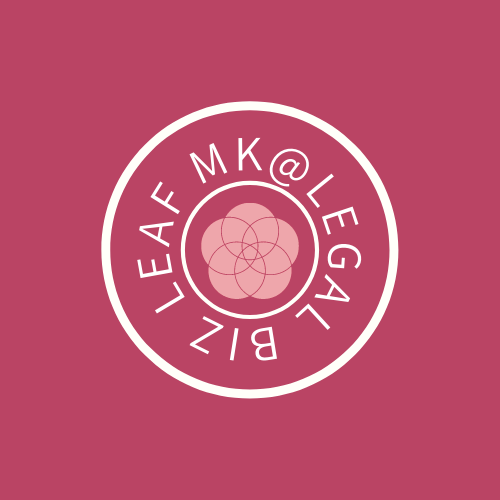Conversion to Common Stock
In Japan, all class shares shall be converted into common shares before listing in principle. This is done to respect the principle of shareholder equality and to simplify the transactions among investors at securities companies.
Therefore, preferred shares issued before going public shall eventually be collected from investors and in most cases, “put option” and “call option” are used as a scheme.
A put option is the right which shareholders can demand a company to sell acquire their shares, while a call option is a right which company can forcefully obtain shares from shareholders.
Preferred shares with call option
This is a right that allows the company to compulsorily acquire preferred shares from shareholders on condition of certain grounds arising.
Since this is a powerful right that allows preferred shares to be taken away regardless of the will of the shareholders, the following items shall be stipulated in the Articles of Incorporation in advance.
(i) A statement to the effect that such Kabushiki Kaisha will acquire its shares on the day when certain grounds arise, and of such grounds;
(ii) If the grounds referred to in (i) will arise with the arrival of a day to be separately specified by such Kabushiki Kaisha, a statement to that effect;
(iii) If a portion of the shares referred to in (i) will be acquired on the day the grounds referred to in (i) arise, a statement to that effect and of the method for determining the portion of shares to be acquired;
(iv) Details of the consideration for the acquisition delivered in exchange
Example provision to be sated as call option (the above clauses (i) through (iv) can be applied as follows)
(Clause of acquisition with consideration of common shares)
In the event that an resolution to apply for listing of shares of the Company on any financial instruments exchange is to be passed at shareholders meeting (when the Company has a Board of Directors, it shall be read as “resolution of the Board of Directors,” the same shall apply hereinafter) and receives a request for conversion from the lead managing underwriter regarding such listing (ii), the Company may acquire all issued Class A Preferred Shares and may convert them into Common Shares of the Company on the date on the date determined at the shareholders meeting (i). The provisions of Article XXX shall apply mutatis mutandis to the features, number and other conditions of the Common Shares to be delivered to Class A Preferred Shareholders upon such conversion; provided, however, that any fraction of less than one share in the number of shares of Common Share to be delivered to Class A Preferred Shareholders shall be accounted for in accordance with Article 234 of the Companies Act (iv).
In the event that a right of put option is to be established after common shares or class shares have been already issued, unanimous consent of such existing shareholders is required in addition to approval by a special resolution of the shareholders meeting for the amendment of the Articles of Incorporation. On the other hand, if new class shares are to be created, such unanimous consent is not required because none of the class shareholders have been exist yet. (Even in such a case, a special resolution of the general shareholders’ meeting is still required for the amendment of the Articles of Incorporation.)
For example: If the Class A Preferred Shares with the right of put option to be newly stipulated in the Articles of Incorporation, unanimous consent by the Class A Preferred Shareholders is not required because none of the Class A Preferred Shareholders has exist at the time of the resolution to amend the Articles of Incorporation.
Preferred shares with put option
A put option is a right for shareholders to have the company acquire their shares.
The following matters shall be stipulated in the Articles of Incorporation.
(i) A statement to the effect that shareholders may demand that such Kabushiki Kaisha acquire the shares held by such shareholders;
(ii) The period during which the shareholders may demand that such Kabushiki Kaisha acquire such shares held by such shareholders;
* In most cases, as shown in the example below, “at any time” or “from time to time” is stipulated as a request period. However, since such shareholders own the preferred shares, it is usually not expected for the shareholder to suddenly exercise the right to request the acquisition to convert their preferred shares to common shares.
(iii) Details of the consideration for the acquisition delivered in exchange.
Example provision to be sated as put option (the above clauses (i) through (iii) can be applied as follows)
(Clause of acquisition rights with consideration of common shares)
Class A Preferred Shareholders shall have a right to request the Company from time to time (ii) to deliver Common Shares of the Company in exchange for the Company’s acquisition of Class A Preferred Shares for all or part of the Class A Preferred Shares held by them (i). The conditions shall be as follows (iii):
(1) Number of Common Shares to be issued in exchange for the acquisition of Class A Preferred Shares:
The number of Common Shares of the Company to be delivered in exchange for the acquisition of 1 share of Class A Preferred Share (hereinafter referred to as the “Class A Conversion Ratio”) shall be as follows; provided, however, that, if, as a result of the calculation, the number of shares of Common Shares to be delivered in exchange for the acquisition includes a fraction of less than one share, the fraction of less than 1 share shall be rounded down, and in such case, [the Company shall make monetary adjustment as provided in Article 167, Paragraph 3 of the Companies Act / no money shall be delivered as provided in Article 167, Paragraph 3 of the Companies Act]Class A Conversion Ratio = Base Price of Class A Preferred Share/ Class A Conversion Price
(2) Initial Standard Price
Initial Base Price of Class A Preferred Share and the Class A Conversion Price of Class A Preferred Share set forth in the preceding item shall be 1,000 yen.
*1000 yen = Invested amount per share
Reason for stipulating both class shares with put option and call option
Companies seeking to go public usually stipulate both class shares with a put option and call option. Since both of these provisions allow the company to acquire preferred shares and deliver common shares, you might consider that one or the other is sufficient.
However, in the case of shares with call option, if the conversion into common stock results in fractional shares of less than one share, the company must, in principle, choose whether to auction the fractional shares or to purchase them by acquiring court’s approval, which the processes are time consuming.
On the other hand, if the request of acquisition of shares are to be made by the shareholders, such procedures are not necessary, and the fractional shares can be acquired simply by delivering money (or not delivering money if stipulated in the articles of incorporation in advance), thus enabling a smooth conversion to common shares.
In addition, the conditions where company can exercise the right of call option are very limited and must be stipulated in advance in the Articles of Incorporation (e.g., when the company is listed on the stock exchange), which makes them inflexible in case of an emergency.
In order to prepare for such a situation, both class shares with put option and call option are established with the preferred shares.
MK @ 11/10/2022
 MK @ Legal Biz Leaf
MK @ Legal Biz Leaf 
